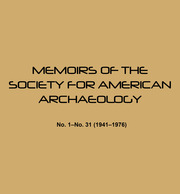Article contents
The Cybernetic Analysis of Human Population Growth
Published online by Cambridge University Press: 27 June 2018
Extract
In my view, certain critical features of current population theory in demography, anthropology, and related fields are misleading. These anomalies have been incorporated into population theories, I argue, largely because the researchers in these fields have tended to be too specialized. Demography, a science rooted in occidental economics and sociology, is oriented toward the study of industrializing and industrialized societies, societies which are by no means representative of the entire range of human societies. Anthropologists, although they have dealt with a wider range of human societies, have tended to neglect the potential theoretical contributions of population ecology, the study of the population dynamics of nonhuman animals. The theory of human population dynamics which I offer here was developed with the value of generality and broad scope constantly in mind. The roots of this theory are in General Systems Theory, population ecology, ethnology, demography, and economics. I propose this population theory largely as a means of encouraging, within all of those sciences concerned with population matters, a new round of debate regarding existing population theories.
- Type
- Research Article
- Information
- Copyright
- Copyright © Society for American Archaeology 1975
References
- 3
- Cited by


